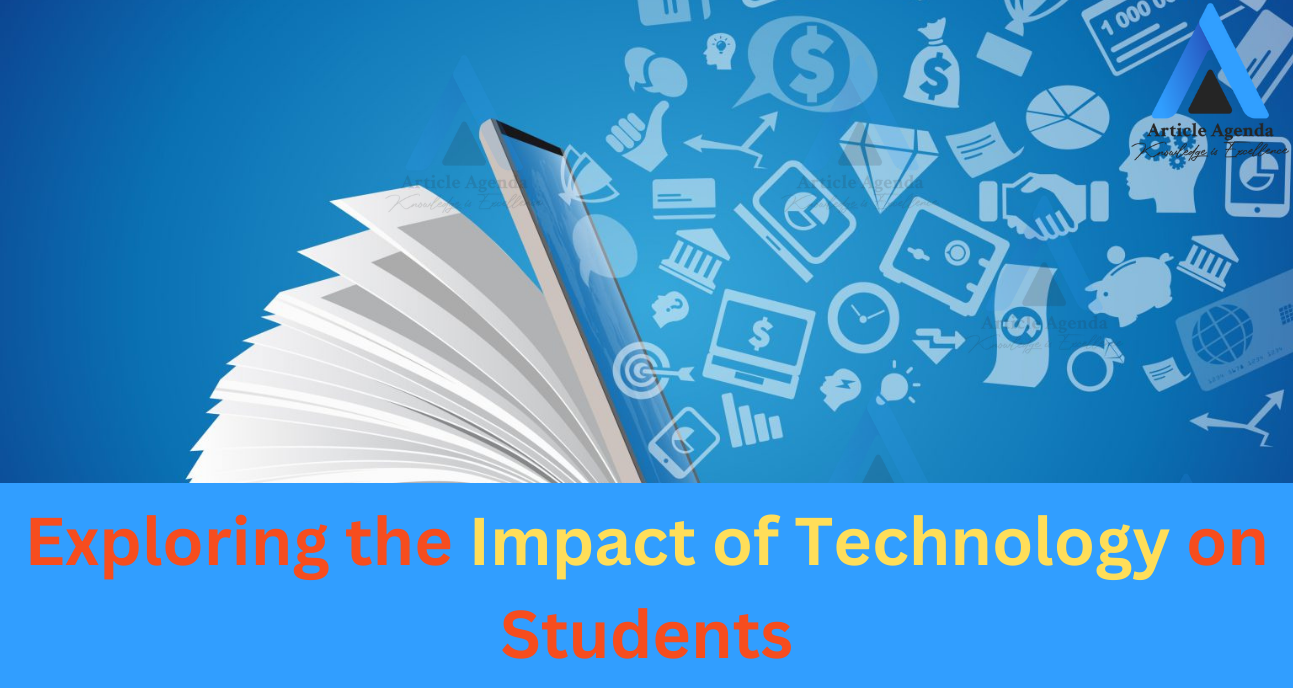Introduction: The role of technology in education
As an educator, I have witnessed the transformative impact of technology in the classroom. In today’s digital age, technology has become an integral part of learning, revolutionizing how students acquire knowledge and skills. From interactive whiteboards to online learning platforms, technology has opened up new possibilities and expanded the horizons of education. In this comprehensive essay, we will delve into the various impact of technology’s on students and explore its benefits, challenges, and potential for the future.
Table of Contents
- Introduction: The role of technology in education
- Benefits of technology in the classroom
- Challenges and concerns with technology in education
- The impact of technology on student learning
- The influence of technology on student behavior and social interactions
- The role of technology in preparing students for the future workforce
- Technology and personalized learning
- Technology as a tool for student engagement and motivation
- Strategies for integrating technology effectively in the classroom
- Conclusion: Embracing the positive impact of technology on students
- Latest Post:
Benefits of technology in the classroom
One of the key benefits of technology in the classroom is the ability to enhance student engagement and participation. With interactive multimedia tools and online resources, teachers can create dynamic and interactive lessons that capture student’s attention and make learning more enjoyable. It, in turn, leads to increased motivation and better retention of information. Additionally, technology enables students to access a wealth of knowledge and resources beyond the confines of the classroom. They can explore different perspectives, conduct research, and broaden their horizons with just a few clicks. This fosters independent learning and cultivates critical thinking and problem-solving skills.
Furthermore, technology provides students with personalized learning experiences. Adaptive learning platforms and educational apps can tailor instruction to meet individual needs and learning styles. This ensures that students receive targeted support and challenge, allowing them to progress at their own pace. Moreover, technology facilitates collaboration and communication among students. Online discussion forums, video conferencing, and shared documents enable students to collaborate on projects, exchange ideas, and develop teamwork skills. These collaborative experiences prepare them for the collaborative nature of the future workforce.
Read More: Mastering the Art of Writing a Stellar Technology Essay: A Comprehensive Guide for Students
Challenges and concerns with technology in education
Despite the numerous benefits, integrating impact of technology in education has its fair share of challenges and concerns. One of the main concerns is the digital divide. Not all students have equal access to technology and the internet, creating a disparity in educational opportunities. This issue needs to be addressed to ensure that all students can benefit from the impact of technology. Additionally, there needs to be more clarity about the reliability and accuracy of online information. With abundant information, students must be taught to critically evaluate sources and discern credible information from misinformation or bias.
Another challenge is the potential for technology to be a distraction. With smartphones and social media, students can easily get sidetracked during class. Teachers must establish clear guidelines and promote digital citizenship to ensure responsible and focused use of technology. Furthermore, there is a concern about the impact of excessive screen time on students’ well-being. Balancing digital and offline activities is essential to maintain a healthy lifestyle and promote holistic development.
The impact of technology on student learning
When it comes to student learning, impact of technology has had a profound. Research has shown that technology can enhance student achievement and improve learning outcomes. For example, interactive simulations and virtual reality experiences can provide a hands-on and immersive learning environment that helps students grasp complex concepts. Moreover, technology enables personalized feedback and assessment, allowing students to monitor their progress and identify areas for improvement. This immediate feedback promotes a growth mindset and empowers students to take ownership of their learning.
Furthermore, impact of technology has revolutionized the way students access educational resources. Online textbooks, e-books, and open educational resources have made learning materials more accessible and affordable. This has leveled the playing field, particularly for students from disadvantaged backgrounds who may not have had access to traditional learning materials. Additionally, technology has expanded the possibilities for distance learning and remote education. Students in remote areas or with disabilities can access quality education and connect with teachers and peers worldwide. This has opened up new opportunities and possibilities for lifelong learning.
Read More: From Necessity to Empowerment: Understanding the Importance of Technology in our Modern World
The influence of technology on student behavior and social interactions
With the integration of technology, students’ behavior and social interactions have undergone significant changes. The widespread use of social media and instant messaging has transformed how students communicate and interact with their peers. While technology has facilitated connections and enabled global collaboration, it has also raised concerns about cyberbullying and the impact of social media on mental health. Educators must address these issues and promote responsible use of technology to foster a positive and inclusive online community.
Moreover, technology has influenced students’ behavior and study habits. With the availability of online resources and tools, students have become more independent and self-directed learners. They have developed the ability to search for information, solve problems, and take ownership of their learning. However, there is a need to teach students digital literacy skills to navigate the vast amount of information available and to discern credible sources. Critical thinking and media literacy should be integrated into the curriculum to equip students with the skills to navigate the digital landscape.
The role of technology in preparing students for the future workforce
In today’s rapidly evolving world, technology is reshaping industries and transforming the nature of work. As educators, we are responsible for preparing students for the future workforce and equipping them with the skills required to thrive in a digital age. Technology plays a crucial role in this preparation. By integrating technology into the curriculum, we can foster the development of 21st-century skills such as critical thinking, creativity, collaboration, and communication. These skills are highly valued in the modern workplace and will be essential for students to succeed in their future careers.
Moreover, technology provides students with authentic learning experiences that mirror real-world scenarios. Simulations, virtual internships, and online collaborations allow students to apply their knowledge and skills in practical settings. This bridges the gap between theory and practice and prepares students for the challenges and demands of the professional world. By embracing technology in education, we can ensure that students are well-equipped to navigate the ever-changing landscape of the future workforce.
Read More: Introduction to the Ethics of AI
Technology and personalized learning
One of the most significant advantages of technology in education is its ability to facilitate personalized learning. Every student has unique strengths, weaknesses, and learning styles. Technology can adapt to these individual differences and provide tailored instruction and support. Adaptive learning platforms, intelligent tutoring systems, and data analytics allow teachers to gather real-time student progress data and customize their education accordingly. This personalized approach ensures that students receive the support they need to succeed and will enable educators to differentiate instruction in a way that was previously not feasible.
Furthermore, technology enables students to take ownership of their learning and develop self-regulation skills. With online learning platforms and digital tools, students can set goals, monitor their progress, and reflect on their learning. They can access resources independently, revisit concepts, and engage in self-directed exploration. This autonomy fosters a sense of responsibility and independence, empowering students to become lifelong learners.
Technology as a tool for student engagement and motivation
Engaging and motivating students is a constant challenge for educators. Technology offers a wide range of tools and strategies to address this challenge. Gamification, for example, can transform learning into a fun and interactive experience. Educational games and quizzes can reinforce concepts, assess learning, and provide immediate feedback. This gamified approach enhances student engagement and motivation, making learning enjoyable and rewarding.
Furthermore, technology allows for the integration of multimedia elements into lessons. Videos, animations, and interactive simulations can bring abstract concepts to life and make learning more vivid and memorable. These multimedia resources cater to different learning styles and capture students’ attention, facilitating a more profound understanding and retention of information. Additionally, technology provides opportunities for creativity and expression. Students can create digital presentations, videos, and artwork to demonstrate their knowledge and showcase their talents. This creative outlet promotes self-expression and boosts students’ confidence and motivation.
Read More: Chandrayaan-3: Exploring the Next Frontier of Indian Space Exploration
Strategies for integrating technology effectively in the classroom
To harness the full potential of technology in education, it is essential to have a strategic approach to its integration. Here are some strategies for effectively integrating technology in the classroom:
1. Professional development: Teachers should receive ongoing professional development to stay updated on the latest technologies and pedagogical approaches. This will empower them to effectively integrate technology into their instruction and maximize its impact on student learning.
2. Pedagogical alignment: Technology should be integrated to align with the curriculum and instructional goals. It should complement and enhance existing teaching methods rather than replace them. Teachers should carefully select and evaluate digital tools and resources to ensure their relevance and effectiveness.
3. Student-centered approach: Technology should empower students and promote active learning. Teachers should provide opportunities for students to engage with technology in meaningful ways, such as creating digital projects, collaborating online, and conducting research. This student-centered approach fosters autonomy, critical thinking, and problem-solving skills.
4. Equity and access: Efforts should be made to bridge the digital divide and ensure equal access to technology for all students. Schools and districts should provide resources and support to students needing access to technology outside of school. Additionally, teachers should be mindful of students’ diverse backgrounds and learning needs when integrating technology.
5. Digital citizenship: Teachers should explicitly teach digital citizenship skills and promote responsible use of technology. Students need to understand the ethical, legal, and social implications of technology and the importance of online safety and privacy. Educators can create a positive and inclusive online learning environment by fostering good digital citizenship.
Conclusion: Embracing the positive impact of technology on students
In conclusion, technology has had a profound impact on students and education as a whole. It has enriched the learning experience, enhanced student engagement and motivation, and prepared students for the future workforce. While there are challenges and concerns, the benefits of technology far outweigh the drawbacks. As educators, it is our responsibility to embrace the positive impact of technology and harness its potential to transform education. By effectively integrating technology into the classroom, we can create a dynamic and inclusive learning environment that equips students with the skills they need to thrive in a digital age. Let us embrace technology as a powerful tool for empowering students and shaping the future of education.
CTA: Embrace the power of technology in education and join the digital revolution. Start exploring innovative ways to integrate technology into your teaching practice and unlock the potential of your students. Together, let’s shape the future of education and prepare students for success in a rapidly evolving world.
Latest Post:
-
Smart Home Appliances in the UAE: Revolutionizing Modern Living
The UAE has long been recognized as a hub for innovation and technological advancement, and the adoption of smart home appliances is no exception. As the nation embraces the concept of smart homes, residents are experiencing a transformation in their daily lives, characterized by increased convenience, efficiency, and sustainability. This article explores how smart home…
-
(Artificial Intelligence) AI and ML (Machine Learning) : Transforming the Future
Artificial Intelligence (AI) and Machine Learning (ML) are two of the most transformative technologies of our time. They are reshaping industries, driving innovation, and opening up new possibilities in ways previously unimaginable. This article explores the fundamentals of AI and ML, their applications, and their profound impact on various sectors. Understanding Artificial Intelligence (AI) What…
-
Digital Marketing Services: Transforming Your Business in the Digital Age
In today’s digital-first world, businesses must leverage digital marketing services to remain competitive, attract customers, and drive growth. Digital marketing encompasses a broad range of tactics and strategies aimed at promoting products or services through digital channels. This article delves into the various types of digital marketing services available, their benefits, and how businesses can…










Home – Ajmal Farooq
https://exchange-bitcoins.blogspot.com